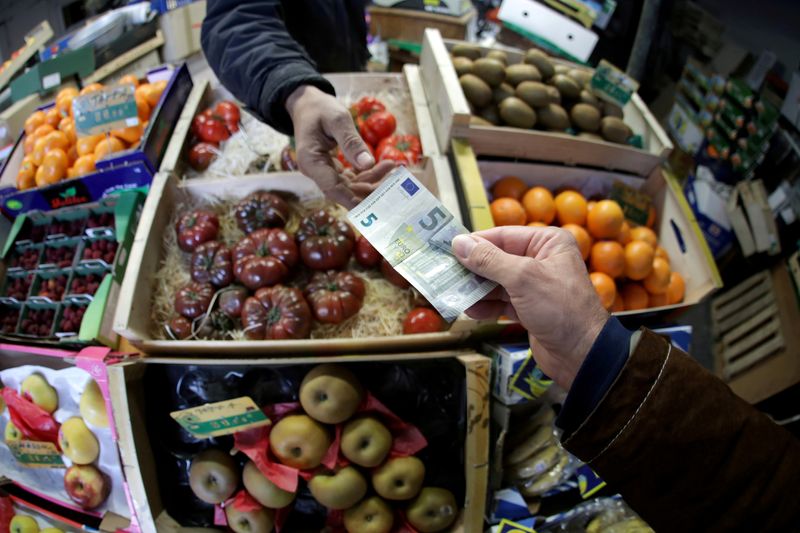Euro zone pulls out of dip with higher growth than expected
2023.07.31 08:03

© Reuters. FILE PHOTO: A shopper pays with a euro bank note in a market in Nice, France, April 3, 2019. REUTERS/Eric Gaillard/File Photo
BRUSSELS (Reuters) – The euro zone returned to growth in the second quarter of 2023, with a greater than expected expansion after narrowly avoiding a technical recession around the turn of the year, preliminary data showed on Monday.
Gross domestic product in the euro zone expanded by 0.3% in the second quarter, above expectations of 0.2% in a Reuters poll of economists. Compared to a year earlier, growth was 0.6% against expectations of 0.5%.
That compared with zero growth in the previous quarter for the 20-nation euro zone and a 0.1% quarter-on-quarter decline in the fourth quarter of 2022.
Among the bloc’s biggest countries, France and Spain grew at a sustained pace on the back of stronger exports and tourism while Germany, the euro zone’s biggest country, registered no growth and Italy suffered a contraction.
Surging inflation due to high energy costs following Russia’s invasion of Ukraine and rising food prices, higher interest rates and waning confidence have taken a toll on the single currency’s economy.
But the economy has displayed some resilience too, much like during the COVID-19 pandemic, when growth outperformed expectations as businesses adjusted faster to changed circumstances than policymakers had predicted.
But even if the bloc is doing better than expected, growth in 2023 is likely to be weak due to a large drop in real incomes and surging interest rates.
The European Central Bank raised the possibility of pausing its interest rate hikes in September as inflation pressures show tentative signs of easing and recession worries mount.
For further details of Eurostat data click on:








